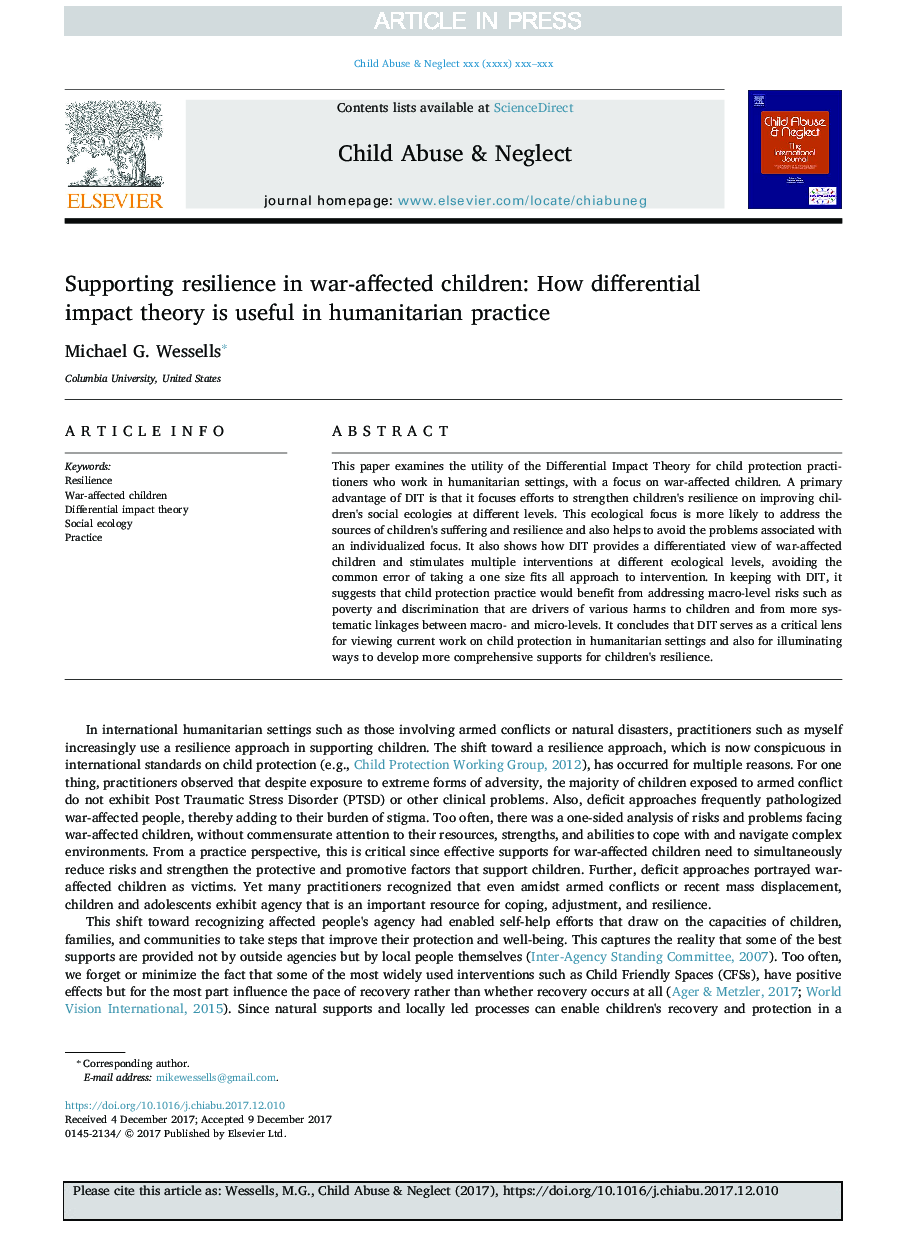| Article ID | Journal | Published Year | Pages | File Type |
|---|---|---|---|---|
| 6832012 | Child Abuse & Neglect | 2018 | 6 Pages |
Abstract
This paper examines the utility of the Differential Impact Theory for child protection practitioners who work in humanitarian settings, with a focus on war-affected children. A primary advantage of DIT is that it focuses efforts to strengthen children's resilience on improving children's social ecologies at different levels. This ecological focus is more likely to address the sources of children's suffering and resilience and also helps to avoid the problems associated with an individualized focus. It also shows how DIT provides a differentiated view of war-affected children and stimulates multiple interventions at different ecological levels, avoiding the common error of taking a one size fits all approach to intervention. In keeping with DIT, it suggests that child protection practice would benefit from addressing macro-level risks such as poverty and discrimination that are drivers of various harms to children and from more systematic linkages between macro- and micro-levels. It concludes that DIT serves as a critical lens for viewing current work on child protection in humanitarian settings and also for illuminating ways to develop more comprehensive supports for children's resilience.
Keywords
Related Topics
Health Sciences
Medicine and Dentistry
Perinatology, Pediatrics and Child Health
Authors
Michael G. Wessells,
